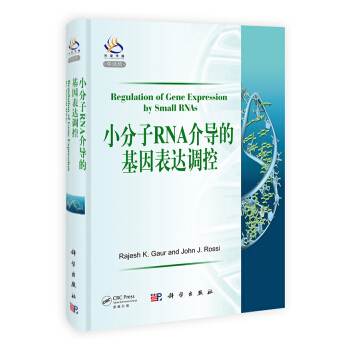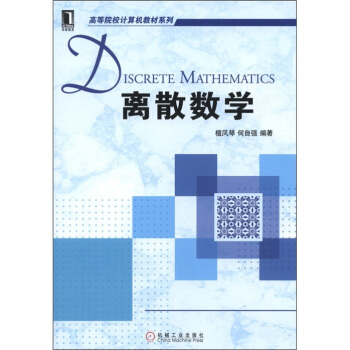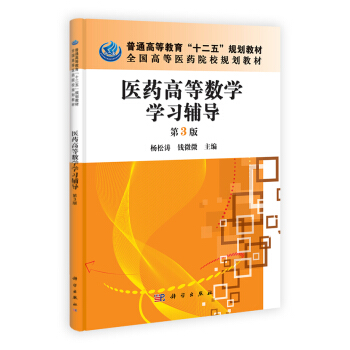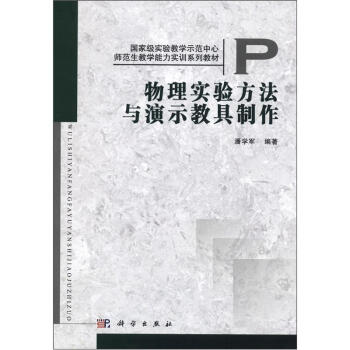

具體描述
內容簡介
內源小分子RNA廣泛存在於各種生物中,包括人類、小鼠、果蠅、蠕蟲、真菌和細菌等。microRNA作為一種細胞調控關鍵因子能夠修飾基因的錶達。在高等真核生物中,microRNA甚至能調控約50%基因的錶達。本書匯集瞭眾多科技工作者的前沿性工作,內容包括從細菌到人類等生物組織中microRNA調控途徑的多樣性。除瞭闡述調控小分子RNA的生物閤成機製及其加工過程,作者還探討瞭這些途徑的功能在寄主體內的重要性。
本書圍繞小分子RNA這一新發現的調控分子,針對其參與調控的廣度與創新性進行瞭闡述。小分子RNA已經成為研究基因功能的強有力工具,並帶來瞭一係列的重大發現,必將對增進基因功能與疾病治療的理解帶來革命性的改變。
目錄
前言緻謝
編者簡介
撰稿人
第1章 MicroMining:通過計算方式發現未知的microRNA Adam Grundhoff
第2章 動物microRNA基因預測 Ola Snφve,Pal S*trom
第3章 研究microRNA存在與功能的一係列資源 Praveen Sethupathy,Molly Megraw, Artemis G. Hatzigeorgiou
第4章 大腸杆菌Hfq結閤小RNA對mRNA穩定性及翻譯的調控 Hiroji Aiba
第5章 動物細胞巾microRNA調控基因錶達的機製 Yang Yu,Timothy W. Nilsen
第6章 秀麗隱杆綫蟲microRNA Mona J. Nolde,Frank J. Slack
第7章 秀麗隱杆綫蟲小RNA的分離及鑒定 Chisato Ushida, Yusuke Hokii
第8章 MicroRNA與果蠅發育 Utpal Bhadra,Sunit KumarSingh,Singh,S. N. C. V. L. Pushpavalli,Praveensingh B. Hajeri,Manika Pal-Bhadra
第9章 斑馬魚RNA乾擾與microRNA Alex S. Flynt,Elizabeth J. Thatcher,James G. Patton
第10章 植物microRNA的産生和功能 Zoltan Havelda
第11章 擬南芥內源小RNA途徑 Manu Agarwal,Julien Curaba,Xuemei Chen
第12章 如何評價microRNA錶達——技術指導 Mirco Castoldi,Vladimir Benes,Martina U. Muckenthaler
第13章 MicroRNA基因錶達定量的方法 Lori A. Neely
第14章 MicroRNA介導的可變剪切調控 Rajesh K. Gaur
第15章 RNA聚閤酶Ⅱ介導的內含子microRNA錶達係統研究進展 Shi-Lung Lin,Shao-Yao Ying
第16章 基於microRNA的RNA聚閤酶Ⅱ錶達載體在動物細胞RNA乾擾中的應用 Anne B. Vojtek,Kwan-Ho Chung,Paresh D. Patel,David L. Turner
第17章 轉基因RNA乾擾技術——一種用於哺乳動物反嚮遺傳學研究的快速低成本方法 Linghua Qiu,Zuoshang Xu
第18章 AIDS交響麯——基於microRNA的治療方法 Yoichi R. Fujii
第19章 MicroRNA與癌癥——連點成綫 Sumedha D. Jayasena
第20章 哺乳動物巾小RNA介導的轉錄水平基因沉默 Daniel H. Kim, John J. Rossi
第21章 由RNA介導的轉錄水平基因沉默控製的基因錶達調控 Kevin V. Morris
索引
精彩書摘
1 MicroMiningComputational Approaches
to microRNA Discovery
Adam Grundhoff
Overview....................................................................................
............................1
1.1 Introduction.......................................................................................................2
1.2 When Is a Small RNA an miRNA?...................................................................2
1.3 Advantages and Disadvantages of Experimental versus Computational
miRNA Identification........................................................................................3
1.4 Computational Prediction of miRNAs..............................................................5
1.4.1 Getting Started: Upstream Filtering......................................................7
1.4.2 Following Through: Structure Prediction and Scoring....................... 12
1.4.3 Wrapping It Up: Experimental Validation........................................... 14
1.5 Viral miRNAs................................................................................................. 15
1.6 Conclusions...................................................................................................... 16
References................................................................................................................. 16
Overview
The recent past has seen the rapid identification of thousands of microRNAs
(miRNAs) encoded by various metazoan organisms as well as some viruses, and it
is very likely that many more still await discovery. Most of the hitherto-known miRNAs
have been identified via the cloning and sequencing of small RNAs. While very
powerful, this approach is not without its limitations: especially those miRNAs that
are of low abundance, or which are only expressed in certain cell types or only during
brief periods of organismal development, or are easily missed in cloning-based
screens. Thus, alternative means of miRNA discovery are needed.
Given that the signal that marks the miRNA precursor for the cellular processing
machinery appears to be a relatively simple one (i.e., a hairpin structure), and
considering the rapidly increasing availability of large-scale genomic sequencing
data for many organisms, computational methods appear ideally suited for the comprehensive
identification of hitherto-unknown miRNAs. This chapter discusses the
general principles of computational miRNA identification methods, examines their
advantages and disadvantages as compared to the cloning method, and takes a look
at the various miRNA prediction algorithms that have been developed recently.
1.1 I ntroduction
miRNAs are small (~22 nt) RNA molecules that are able to regulate the expression of
fully or partially complementary mRNA transcripts. As described in greater detail
elsewhere in this book, they are initially transcribed as part of hairpin structures
within much larger precursor transcripts (the so-called primary RNAs or pri-miRNAs).
Following excision of the stem-loops by the RNase III?like enzyme Drosha,
the isolated hairpins (called precursor miRNAs or pre-miRNAs) are exported to
the cytoplasm and further processed by the Dicer complex to produce the mature,
single-stranded miRNA molecule. Recent evidence suggests that plants and animals
encode a multitude of miRNAs, many of which are evolutionarily conserved. As of
this writing, it is still true that the majority of known miRNAs have been identified
experimentally, that is, by cloning of small RNAs. However, this method has certain
limitations, and alternative means for the prediction of novel miRNAs are therefore
increasingly sought.
The observation that pre-miRNAs form characteristic stem-loops has spurred the
development of a number of computational approaches designed to identify novel
miRNA candidates based on the prediction and analysis of secondary structures.
Given the already complete or near-complete sequencing of whole genomes from
many species, such approaches hold great promise for identifying the full complement
of miRNAs encoded by a given organism. However, because the precise set of
structural features that differentiate a pre-miRNA stem-loop from the large number
of hairpins in the genome is not known, additional filters have to be employed to
reduce the number of false-positive predictions, and experimental confirmation of
the remaining candidates is required. In this chapter, I will compare the benefits
and disadvantages of computational miRNA prediction methods in comparison to
the cloning method, review principles of the existing miRNA prediction algorithms,
discuss the general challenges and pitfalls of in silico miRNA identification, and
provide an outlook of what might be expected from these approaches in the future.
Finally, I will consider a special application of the miRNA prediction problem: the
identification of miRNAs in viral genomes.
1.2 W hen is a small RNA an miRNA ?
In order to devise approaches designed to identify miRNAs, be they experimental
or computational, it is important to clearly define what an miRNA is. In a biological
sense, such a definition is quite straightforward: an miRNA is simply a small,
single-stranded regulatory RNA molecule that is generated from its precursor molecules
via successive processing by Drosha and Dicer. It is much more difficult,
however, to define practicable criteria that are readily testable on an experimental
or computational basis and that can unequivocally identify a candidate sequence as
a genuine miRNA. Following the realization that miRNAs represent abundant molecules
expressed in a wide variety of organisms, a consortium of researchers agreed
on a set of criteria that have to be fulfilled before a candidate can be called a bona
fide miRNA.1 According to these guidelines, it is necessary to provide evidence that
(1) the candidate sequence is expressed as an appropriately sized RNA molecule in
living cells and, furthermore, does not stem from random degradation (Expression
criteria), and (2) that the maturation of the candidate involves processing by Drosha
and Dicer (Biogenesis criteria). The expression criteria are preferentially satisfied by
detection of a distinct band of approximately 22 nt on a Northern blot. Alternatively,
the ability to detect the molecule in a library of cloned, size-selected RNAs is considered
sufficient evidence, especially if the library contains high copy numbers of
the particular candidate sequence.
To satisfy the biogenesis criteria, the guidelines by Ambros et al.1 call for experimental
proof of Dicer processing by demonstrating that increased levels of the precursor
accumulate in cells with decreased Dicer expression. In contrast, experimental
proof of Drosha processing is generally not required; instead, it is sufficient to show
that the putative precursor transcript has the capacity to adopt a secondary structure
that is likely to be amenable to Drosha processing. Of course, given the incomplete
knowledge of the rules governing recognition of target mRNAs by Drosha, it is not
known what exactly makes a given RNA structure amenable to Drosha processing,
and (as will be discussed later) this complicates the computational prediction
of miRNA candidates considerably. Based on the characteristics of known miRNA
precursor structures, however, it is generally agreed that the minimal requirements
are (1) the adopted structure is a hairpin that does not contain many or large internal
bulges, and (2) the mature miRNA is to be found within the stem (not the loop) part
of the hairpin.
Evolutionary conservation serves as a third biogenesis criterion: As miRNAs
are often conserved in closely related (and sometimes even in distant) species,
phylogenetic conservation of the miRNA sequence itself as well as its fold-back
structure is considered strong evidence that the candidate sequence represents a
genuine miRNA. An ideal miRNA candidate would meet all of the preceding criteria;
however, it is generally considered sufficient to provide convincing evidence
for at least one criterion out of the two categories. Indeed, because Dicer knockout
cells are not readily available for most organisms, and effective knockdown of
Dicer is technically challenging, positive experimental proof of Dicer processing
is rarely shown.
1.3 A dvantages and Disadvantages of Experimental
versus Computational miRNA Identification
The “traditional” approach to identifying miRNAs consists of cloning of small RNA
moieties. Although several protocols for the efficient cloning of such molecules have
been devised, they all rely on the common principle of ligating linkers to size-fractionated
RNAs, followed by cDNA synthesis and typically PCR amplification. The
obtained products are then either cloned (often after concatamerization to increase
the information obtained in a single-sequence read) and sequenced, or subjected
directly to massive parallel sequencing approaches (“deep sequencing”). According
to the guidelines described earlier, these candidates are then further evaluated to
ensure that the putative pre-miRNA sequence adopts an appropriate hairpin structure
around the candidate. If this is the case, the candidate can generally be considered a
bona fide miRNA, since the recovery of the clone from a small RNA library already
satisfies the expression criterion (nevertheless, Northern blots are often performed to
allow for proper quantification of the miRNA).
The cloning approach has been extremely successful, and although increasing
numbers of miRNAs are being identified via computational means, the majority
of confirmed miRNAs currently listed in the miRNA database (miRBase, http://
microrna.sanger.ac.uk) still have been identified via this method. One of the great
advantages of the cloning protocol is that it provides the precise sequence of the
mature miRNA molecule. Therefore, in contrast to hybridization-based methods,
even closely related miRNAs that differ in only one nucleotide position can be distinguished.
Also, the currently available computational prediction tools generally only
allow identification of miRNA precursors but do not reliably predict the location of
Drosha and Dicer cleavage sites. In contrast, cloning identifies the precise 5′ and 3′
termini of the mature miRNA molecule.
As it appears that nucleotides 2 to 8 of the miRNA (the so-called seed region)
are especially important for target recognition, knowledge of the precise ends (and
particularly the 5′ terminus) is a distinct advantage if a computational prediction
of target transcripts is to be performed. As might be expected, the frequency with
which a given miRNA is cloned often is approximately equivalent to its abundance
(although this frequency may also be affected by other factors; see the following text)
and therefore provides a rough estimate of its expression levels. Thus, abundantly
expressed miRNAs are usually readily identified. However, it can be challenging
to achieve a saturated screen that also captures rare miRNAs. Furthermore, even if
such miRNAs are contained within the library, one can never be entirely certain that
enough clones have been sequenced to identify all of them.
In addition to these constraints, the scope of a cloning screen is also limited by
its source material; naturally, only miRNAs that are expressed in the cells from
which the RNA material was derived can be identified. Many miRNAs, however,
are expressed in a tissue-dependent manner, or are only expressed at certain developmental
stages. This limitation can be partially overcome for relatively simple organisms,
where the RNA can be prepared from whole animals (e.g., mixed larvae stages
and adults from worms or insects).
In organisms with higher complexity such as vertebrates, however, the situation is
more difficult: RNA from different embryonic or adult tissues can be mixed, but the
sensitivity of the screen will dramatically decrease with the complexity of the source
material, and it is very unlikely that nonabundant miRNAs could be identified in
such screens. While these problems could be theoretically solved by massive screening
efforts, that is, performing separate screens with material prepared from every
individual tissue at each developmental stage, the cloning approach also appears
limited in a more fundamental way. Several observations suggest that some miRNAs
are more readily cloned than others owing to intrinsic properties such as sequence
composition, the presence of certain nucleotides at their termini, or posttranscriptional
modifications such as methylation or RNA editing.2?6
Computational approaches to miRNA discovery are not subject to many of the
limitations that apply to the cloning method. Certainly, one of the biggest advantages
of computational miRNA identification is the universal scope of the analysis; as the
prediction does not require experimental material, it can potentially discover all of
the miRNAs encoded by a given organism, even those that are expressed only at
very low levels, in rare cells, or during brief periods of development. However, this
advantage is partially annulled by the insufficient precision of the presently available
algorithms: as the programs (to varying degrees) produce large numbers of falsepositive
predictions, experimental verification is still a necessity. Northern blotting is
frequently performed to investigate the expression of the computationally predicted
candidates, or the predicted sequences are amplified from small RNA libraries.
These procedures are not particularly compatible with high-throughput screening,
and since many computational methods produce large numbers of candidates, only a
small contingent of the predictions is usually subjected to experimental verification,
whereas the majority remains untested. More importantly, the experimental validation
methods are subject to many of the same limitations that hamper the cloning
approach. Thus, even if an experimental verification is attempted and fails, it is often
impossible to decide whether the failure was due to a false-positive prediction, insufficient
sensitivity of the experimental detection method, or lack of expression in the
tested tissue or cell line.
It is thus perhaps not surprising that the expression criterion has not been satisfied
for most computationally predicted miRNA candidates. While some groups have
attempted to reconcile these difficulties by developing expression analysis tools that
are, for example, more sensitive or allow high-throughput screening, there is also
tremendous effort to increase the reliability of computational prediction methods
such that experimental confirmation is becoming less important.
1.4 Computational Prediction of miRNA s
A plethora of computational approaches aimed at the prediction of miRNAs have
been devised, and although nearly all of them use the evaluation of features that are
thought to be characteristic for miRNAs in order to identify novel candidates, they
vary significantly in scope, complexity, and level of sophistication of the underlying
algorithms. Some approaches strive to identify the totality of miRNAs encoded by a
given organism, whereas others aim to identify only miRNAs that represent closely
related ortho- or paralogs of those that are already known. Some programs investigate
some of the largest genomes, those of mammals, whereas others consider only
some of the smallest, those of viruses.
Despite these differences, most of the approaches function according to a common
scheme that might be abstracted as follows. First, a pool of input sequences
(usually representing the complete genome of a given organism) is filtered in order to
limit the number of candidates that have to be evaluated by downstream algorithms.
I will refer to this process as upstream filtering in the following. The filtered pool is
then subjected to a structure prediction. The obtained structures are then compared
to those of known pre-miRNAs, and a score calculation is performed, depending on
the degree of similarity. Finally, experimental validation is attempted, usually for a
selection of the highest-scoring candidates.
There are considerable differences in the degree to which structural features are
investigated during the scoring step; sometimes the filter might simply ensure that the
candidate forms a hairpin structure, whereas in other cases it might investigate the
candidate’s structure down to the minutest detail. The level of sophistication, in large
part, will depend on the design of the upstream filter and the efficiency with which
this filter preselects a set of candidates enriched for genuine miRNAs. For example,
phylogenetic conservation is the most widely used upstream filter (and at least presently,
it is also appears to be the most efficient). Indeed, if the sequence of a known
mature miRNA is perfectly conserved in a closely (or even distantly) related species,
a relatively simple structural analysis that shows that the ability of the surrounding
sequences to adopt a fold-back structure is conserved as well might suffice.
In contrast, an ab initio prediction method in which the upstream filter is minimal
will require a much more detailed structural analysis during the downstream scoring
step. Thus, a highly efficient upstream filter requires a less elaborate downstream
structure evaluation, and vice versa. The cloning method might be considered a special
case of this scheme in which the upstream filtering is based on an experimental
procedure; since this method produces only little background, the subsequent structural
investigation can be minimal.
All of the available computational approaches are subject to the production
of false-positive (i.e., candidates that pass the filters but do not represent genuine
miRNAs) and false-negative predictions (i.e., bona fide miRNAs that are rejected
during the upstream filtering or the downstream scoring step). The ratio with which
true-positive versus false-positive predictions are made will determine the algorithm’s
accuracy, while the ratio of true-positive versus false-negative predictions
will determine its sensitivity. Such rates are frequently estimated in order to judge an
algorithm’s performance.
Estimating the rate of false-negative predictions is a relatively straightforward
process. Often, only a limited number of the contingent of known miRNAs is used to
establish the parameters of the filtering and scoring algorithms. The remaining miRNAs
are then subjected to the prediction procedure, and the number of rejected versus
retained miRNAs is determined. Alternatively, the full complement of miRNAs
is repeatedly passed through the filters, and the method parameters are adjusted
until an acceptable ratio between rejected and accepted miRNAs is achieved (what
exactly an acceptable ratio is will greatly vary with the overall design and scope of
the method).
The estimation of false-positive prediction rates is a more complicated matter:
in order to measure such numbers with high reliability, one ideally would
have a set of sequences that assuredly does not contain any miRNAs at all, or a
set in which all of the genuine miRNAs are known beforehand. In theory, such
a set can be created artificially from randomly generated sequences, or by shuffling
naturally occurring ones, but since biological sequences are nonrandom, such
a reference set would be hardly representative of the experimental sequence set.
Alternatively, one might select genetic elements that have known functions and
are thus unlikely to additionally represent miRNAs, but this would reduce the
complexity of the reference set so drastically that the gained information would be
close to meaningless.
In reality, the rate of false-positive predictions is often estimated on an experimental
basis. For this purpose, a representative subset of the predictions (or all of
前言/序言
用戶評價
評分拿到《小分子RNA介導的基因錶達調控(導讀版)》這本書,我最大的感受就是“原來科學可以這麼有趣!”。我一直對生命科學的奧秘充滿好奇,但很多時候,科學著作的專業性和枯燥性會讓人望而卻步。然而,這本書卻顛覆瞭我的這種刻闆印象。作者在開篇就用非常引人入勝的語言,將基因錶達調控的重要性娓娓道來,讓我立刻被吸引住瞭。它並沒有直接深入到復雜的分子機製,而是先為讀者構建瞭一個宏觀的認知框架。我尤其喜歡它對小分子RNA這個“主角”的描繪,仿佛它們是細胞內部無聲的“指揮官”,精準地調控著每一個基因的“工作狀態”。書中對miRNA和siRNA如何影響基因錶達的解釋,圖文並茂,通俗易懂,讓我這個生物學領域的“小白”也能看得津津有味。它不僅僅是知識的堆砌,更是一種思維方式的引導,讓我開始用更宏觀、更係統的角度去看待生命現象。這本書就像一扇窗,透過它,我看到瞭一個微觀而又宏大的生命世界,充滿瞭精妙的設計和無窮的奧秘。
評分《小分子RNA介導的基因錶達調控(導讀版)》這本書,當我第一次拿到它的時候,就有一種“相見恨晚”的感覺。雖然我不是生物學專業的,但一直對生命科學的精妙之處充滿興趣。這本書恰好滿足瞭我這種渴望,用一種非常人性化、非常接地氣的方式,將小分子RNA這個在基因調控中扮演著核心角色的領域呈現在我麵前。書的開篇並沒有直接拋齣晦澀難懂的概念,而是從生物體如何通過調控基因錶達來適應環境、維持生命活動這樣一個更宏大的視角切入,讓我迅速對基因調控的重要性有瞭深刻的認識。接著,作者巧妙地將話題引嚮瞭小分子RNA,並用生動形象的語言,將miRNA、siRNA等不同的分子“擬人化”,仿佛它們是細胞內部的“特工”或者“信使”,在精密的網絡中傳遞著信息,調控著基因的“開關”。我尤其欣賞書中對小分子RNA作用機製的闡述,比如它們如何識彆靶嚮的mRNA,如何影響蛋白質的閤成,這些復雜的生化過程,在作者的筆下變得清晰而有趣,就像在觀看一部精彩的科幻電影。
評分當我打開這本書,腦海中閃過的第一個念頭就是:“這下可算有得看瞭!”我一直對基因調控這個話題很感興趣,但市麵上很多相關的書籍要麼過於學術,要麼太淺顯,難以滿足我深入瞭解的需求。這本《小分子RNA介導的基因錶達調控(導讀版)》恰好填補瞭這個空白。雖然它是“導讀版”,但內容之充實,讓我著實吃瞭一驚。它從宏觀上介紹瞭基因錶達調控的整體框架,然後聚焦到小分子RNA這個“主角”上,詳細闡述瞭它們的種類、生成機製以及在不同生物過程中的作用。我特彆欣賞書中對不同類型小分子RNA(比如miRNA和siRNA)作用機製的深入剖析,圖文並茂地展示瞭它們如何與靶基因相互作用,進而影響蛋白質的閤成。其中關於miRNA調控基因錶達的“種子區域”假說,以及siRNA的RNA乾擾(RNAi)通路,在我看來簡直是精彩絕倫的章節,讓我對這些微小的分子如何發揮如此巨大的調控作用有瞭更深刻的認識。這本書的講解方式,就像在帶領我進行一次細胞內的“探險”,每一次翻頁,都可能發現一個關於生命運作的新奇之處。它沒有迴避復雜的技術細節,但又不會讓讀者感到 overwhelming,反而能激發進一步探索的興趣。
評分說實話,看到《小分子RNA介導的基因錶達調控(導讀版)》這個書名的時候,我其實有點猶豫。我不是生物學專業的,擔心這本書會過於專業,讀起來會很吃力。但抱著試一試的心態翻開瞭它,卻驚喜地發現,這完全是一本為我這樣的讀者量身打造的書。作者的敘述方式非常清晰流暢,邏輯性也很強。它並沒有一開始就鋪天蓋地地介紹各種專業名詞,而是從一個更廣泛的背景入手,比如生命體是如何通過控製基因的開關來維持自身正常運作的。然後,纔慢慢引齣小分子RNA這個在基因調控中扮演著重要角色的“新星”。我尤其喜歡它對小分子RNA的“傢族史”的介紹,以及它們如何從最初被發現到如今成為生物學研究的熱點。書中對miRNA和siRNA等不同小分子RNA功能的闡述,也十分到位,用非常形象的比喻,比如把它們比作“基因的沉默者”或者“精密的微調器”,讓我這個非專業人士也能輕鬆理解它們在細胞中的關鍵作用。整本書讀下來,感覺就像是在聽一位經驗豐富的科學傢,用最易懂的語言,為我揭示細胞內部一場精彩絕倫的“基因調控大戰”。
評分初拿到這本《小分子RNA介導的基因錶達調控(導讀版)》,我原本以為這是一本硬核的學術專著,光是書名就透著一股子專業和嚴謹。但翻開目錄,纔發現它遠比我想象的要親民。開篇的章節,雖然涉及到瞭分子生物學的基本概念,但作者用一種非常生動形象的方式來解釋,比如把基因比作“生命藍圖”,把蛋白質比作“建築工人”,一下子就把復雜的概念變得容易理解。我尤其喜歡它對小分子RNA“身份”的描述,不僅僅是簡單的RNA序列,更是細胞內部精密的“信使”和“調控員”,它們是如何悄無聲息地影響著基因的“開關”,從而 orchestrate 整個細胞的活動,這部分簡直讓我驚嘆於生命的神奇。雖然我並非此領域的專傢,但閱讀過程中,我感覺自己就像一個初入科學殿堂的學生,在一位循循善誘的老師的帶領下,一步步揭開生命的奧秘。它沒有一開始就拋齣晦澀難懂的專業術語,而是循序漸進,讓我在不知不覺中吸收瞭大量知識。即使是像miRNA、siRNA這樣的專業詞匯,在書中也被賦予瞭易於理解的“角色”,仿佛它們是舞颱上的演員,在基因調控的戲劇中扮演著至關重要的角色。這種“導讀版”的誠意,體現在每一個章節的編排和語言的選擇上,它成功地架起瞭普通讀者與前沿科學之間的橋梁,讓我這個對生物學僅有淺薄瞭解的人,也能感受到這項研究的魅力與重要性。
書封麵灰塵很多擦不乾淨
評分有點過時瞭,隻綜述瞭2006年以前的,目錄是中文,內容是英文的,圖解比較清晰。本書匯集瞭眾多科技工作者的前沿性工作,內容包括從細菌到人類等生物組織中microRNA調控途徑的多樣性。除瞭闡述調控小分子RNA的生物閤成機製及其加工過程,作者還探討瞭這些途徑的功能在寄主體內的重要性。
評分書封麵灰塵很多擦不乾淨
評分準備好好閱讀,等有點心得再追加評論吧。
評分內容很豐富,對實驗很有指導作用
評分此書的內容排版非常好 書內容也很全麵 贊!
評分是全英文版,原書齣版於2009年,內容較新。紙張不錯,印刷字跡有些淡,裝幀很好,值得專業人士購買、閱讀和收藏。
評分內容很豐富,對實驗很有指導作用
評分準備好好閱讀,等有點心得再追加評論吧。
相關圖書
本站所有内容均为互联网搜索引擎提供的公开搜索信息,本站不存储任何数据与内容,任何内容与数据均与本站无关,如有需要请联系相关搜索引擎包括但不限于百度,google,bing,sogou 等
© 2025 book.tinynews.org All Rights Reserved. 静思书屋 版权所有





![颱灣海峽常見魚類圖譜 [Atlas of Common Sea Fishes in Taiwan Strait] pdf epub mobi 電子書 下載](https://pic.tinynews.org/10992977/587f1d5cNdb47f151.jpg)



![中國區域海洋學:漁業海洋學 [Regional Oceanography of China Seas:Fisheries Oceanography] pdf epub mobi 電子書 下載](https://pic.tinynews.org/11020997/rBEIDFADu3oIAAAAAADKybragtAAAEBrgHos4QAAMrh027.jpg)
![中國區域海洋學:海洋地貌學 [Regional Oceanography of China Sesa:Marine Geomorphology] pdf epub mobi 電子書 下載](https://pic.tinynews.org/11037138/rBEDilADv6sIAAAAAADF0WbTkIkAAEBvwNVHV4AAMXp299.jpg)









